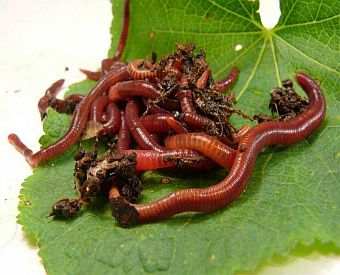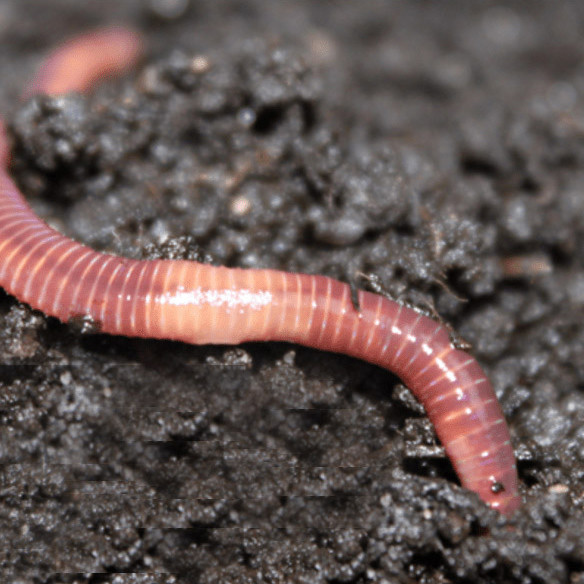Get one of the most Out of Your Compost With Red Wigglers
The assimilation of red wigglers into your composting system can considerably improve the effectiveness and performance of waste management techniques. These worms are not just skilled at breaking down natural products yet additionally add to the development of top quality compost that improves soil health and wellness.
Comprehending Red Wigglers
Recognizing red wigglers is essential for anyone curious about vermicomposting, as these worms play a crucial role in damaging down natural issue. Clinically referred to as Eisenia fetida, red wigglers are identified by their reddish-brown color and slender bodies, generally gauging between 3 to 4 inches in length. Unlike earthworms, which grow in dirt, red wigglers prefer a moist, organic-rich setting, making them ideal for composting systems.
These worms are renowned for their voracious hunger, eating half their body weight in natural material daily. This capacity enables them to swiftly break down kitchen area scraps, lawn waste, and various other naturally degradable materials, transforming them right into nutrient-rich garden compost. Red wigglers prosper in temperature levels ranging from 55 ° F to 77 ° F, requiring mindful surveillance of their atmosphere to guarantee optimal activity.
Furthermore, red wigglers replicate quickly, increasing their population around every 3 to 4 weeks under suitable conditions. This quick reproduction is crucial for maintaining a reliable composting operation. red wigglers. Recognizing their biology and habits is vital for anyone aiming to harness their capacity in lasting waste administration techniques
Benefits of Vermicomposting
Vermicomposting deals many advantages that expand beyond simple waste decrease. This cutting-edge technique leverages the natural decomposition capabilities of red wigglers to transform natural waste right into nutrient-rich compost, boosting dirt wellness and fertility. The resulting vermicompost is including helpful microorganisms, which can enhance soil structure and rise nutrition accessibility for plants.

Furthermore, vermicomposting can be exercised in different setups, making it easily accessible for urban residents and those with limited exterior space. It calls for marginal investment and can be quickly taken care of indoors or outdoors, making it suitable for numerous way of lives.
Making use of vermicompost also advertises much healthier plant growth by enhancing microbial task, boosting water retention, and supplying essential nutrients. Garden enthusiasts and farmers who integrate vermicompost into their methods often observe boosted plant returns, making vermicomposting a lasting selection for both waste monitoring and farming efficiency.
Setting Up Your Worm Container
Developing an effective worm bin is vital for effective vermicomposting, and with simply a few crucial components, anyone can develop an efficient system. Start with an ideal container; a plastic or wooden bin with a lid works well. Preferably, the container must be between 10 to 18 inches deep to offer adequate space for the worms to thrive.
Guarantee correct ventilation by drilling tiny openings in the sides and lid, enabling airflow while retaining wetness. Maintain a balance between wetness and water drainage; the bin ought to perspire but not saturated. A layer of bed linen, such as shredded paper or cardboard, offers a habitat for the worms and aids in moisture retention.
Consider the area of your worm bin (red wigglers). By following these guidelines, you will develop a helpful atmosphere for red wigglers, laying the groundwork for an effective vermicomposting endeavor.
Feeding Your Red Wigglers

Avoid feeding them meat, dairy, and oily foods, as these can bring in bugs and develop undesirable smells. Additionally, it is essential to slice or shred bigger products to facilitate quicker disintegration, ensuring your worms can access the nutrients extra efficiently.
Moderation is crucial; overfeeding can cause anaerobic conditions, hurting the worms and slowing down the composting procedure. Screen the container for leftover food and change your feeding program accordingly. A basic policy is to give concerning half a pound of food per extra pound of worms each week.
Lastly, keeping dampness is crucial. Go for a damp, yet not soggy, setting, as dampness aids in the malfunction of food and sustains worm task. By carefully managing their diet plan, you can enhance the efficiency of your red wigglers in transforming organic waste right into rich compost.
(red wigglers for sale near me)
Harvesting and Using Garden Compost
After a number of weeks of persistent composting, you will certainly discover that the abundant, dark substance created by your red wigglers is all set for harvest. This nutrient-dense worm castings, commonly described as vermicompost, can dramatically boost soil health and plant growth. To collect, delicately separate the ended up garden compost from the remaining bed linens and worms. One effective technique is to use a light resource; click reference red wigglers are delicate to light and will tunnel deeper right into the product, allowing you to scoop out the leading layer of garden compost.
As soon as collected, the compost can be used in different applications. Mix it right into yard dirt to boost framework and fertility, or utilize it as a top dressing for potted plants.
Keep in mind to store any type of unused compost in a trendy, completely dry area to preserve its top quality. By successfully collecting and using the garden compost created by red wigglers, you not only improve your garden however additionally advertise sustainable gardening practices.
Conclusion
Including red wigglers into composting practices dramatically improves the effectiveness of natural waste transformation. The utilization of these worms not only accelerates the composting process yet also enhances soil high quality through their nutrient-rich castings. Developing a proper worm container and maintaining optimal conditions makes certain the health and performance of these organisms. Ultimately, the assimilation of red wigglers in composting adds to sustainable gardening, minimizes garbage dump waste, and advertises environmental stewardship via reliable resource recycling.